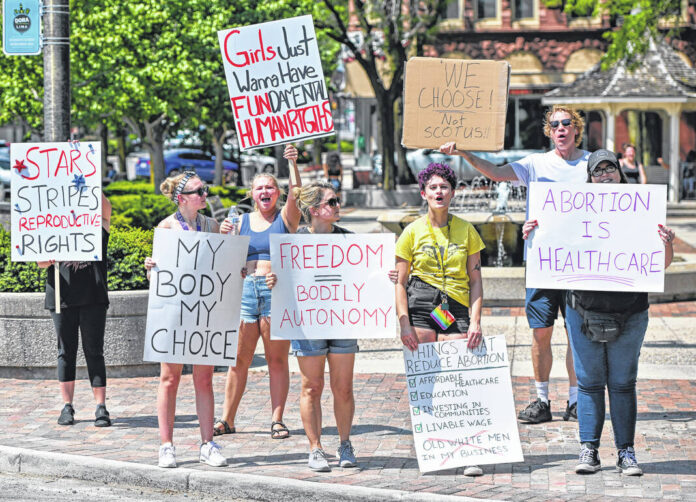LIMA — Days after the U.S. Supreme Court overturned Roe v. Wade, Democratic gubernatorial candidate Nan Whaley called for a ballot initiative codifying abortion rights previously protected by Roe into the Ohio constitution.
“Ohio is a pro-choice state … If Gov. DeWine and the extremists in the legislature are going to push their dangerous, anti-women agenda, it’s time for voters to fight back,” Whaley said during a press conference in June.
“If they’re going to ban abortion, we’re going to take it to the people and say enough is enough.”
A surprise victory last week for abortion rights supporters in Kansas, where voters overwhelmingly rejected a constitutional amendment that would have allowed lawmakers to restrict abortion access, renews the question raised by Whaley five weeks ago: Could a similar ballot initiative succeed in Ohio?
Early preparations
Abortion rights groups are already planning to draft a constitutional amendment protecting abortion rights, though it is unclear when the citizen-led ballot initiative could happen here, according to Cleveland.com.
The deadline to gather signatures and file a petition with the Secretary of State to have a question appear on the ballot in November is Monday, so the question is unlikely to come before voters this November.
A similar effort led by Democratic lawmakers, who introduced a constitutional amendment earlier this year that would have allowed voters to decide the fate of abortion and contraceptive rights in Ohio, is also unlikely to happen this year due to the Republican supermajority in the General Assembly.
Still, reproductive rights groups told Cleveland.com that they are focused on Ohio Supreme Court elections this year, which could determine the future of the abortion debate in Ohio.
What happened in Kansas
In Kansas, the right to abortion is protected by the state’s constitution. So lawmakers there introduced a constitutional amendment that would have allowed them to restrict abortion access after 22 weeks gestation, the current legal cutoff in the state.
The amendment—the first of its kind post-Roe—failed by 18 percentage points.
Turnout was also unusually high for a midterm primary election with more than 900,000 votes cast, exceeding predictions from the secretary of state.
How do Ohioans feel about abortion?
A June 7 poll conducted by Suffolk University and the Cincinnati Enquirer found that 53% of likely voters in Ohio supported access to legal abortions, while only 39% of respondents said lawmakers should restrict abortion if Roe was overturned.
The results are similar to a 2019 Quinnipiac poll which found 52% of Ohio voters opposed banning abortion once fetal heart tones are detected, which typically occurs around six weeks gestation.
That ban is now in effect following the overturning of Roe, and lawmakers are expected to resume abortion talks later this year.
“What we hear is about the rights of the individual to control their own body and not have the government controlling their body,” said Jeffrey Sites, executive chairman of the Allen County Democratic Party, who said he has seen an uptick in voter registration and interest from young, female and unaffiliated voters.
“So, I think you’ll see the same thing if it comes up in Ohio, that a majority of voters will vote for those rights for women to be held up.”
‘It’s hard to get people to say yes’
While some abortion rights supporters see the Kansas vote as evidence of a disconnect between voters and lawmakers on abortion, Senate President Matthew Huffman said he isn’t reading too much into the results just yet.
“I think the amendment in Kansas was trying to proactively create something in the constitution, and I don’t really read a whole lot into it,” Huffman said on Friday. “Typically, most people’s first vote that they have is a no vote in changing the constitution. It’s hard to get people to say yes.”
Lawmakers are also expected to revisit the heartbeat ban before the end of the year to resolve questions like what to do with frozen embryos and what the law’s life of the mother exception really means, Huffman said.
“We’re trying to painstakingly go through so that there’s no confusion or misunderstanding, especially among the medical community, about how these things are to be done,” Huffman said, noting that the Senate has formed a working group to consider these questions before the end of the legislative session.
“We want to get this right,” he added.







